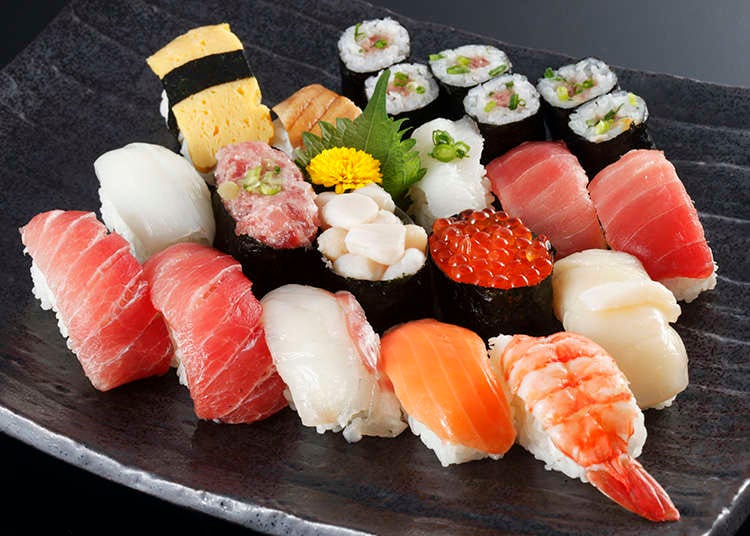
Sushi is basically vinegared rice with seafood on the top, or a mixture of the two. It is now popular popular all over the world and is seen as a typical Japanese food. The most common type is Nigiri, or hand-rolled sushi, which is rice rolled into bite-sized pieces, called Shari, and covered with a piece of seafood, called Neta. You can add a touch of wasabi (horseradish) and a very small amount of shoyu (soy sauce) to enhance the flavor of the sushi.
The History of Sushi
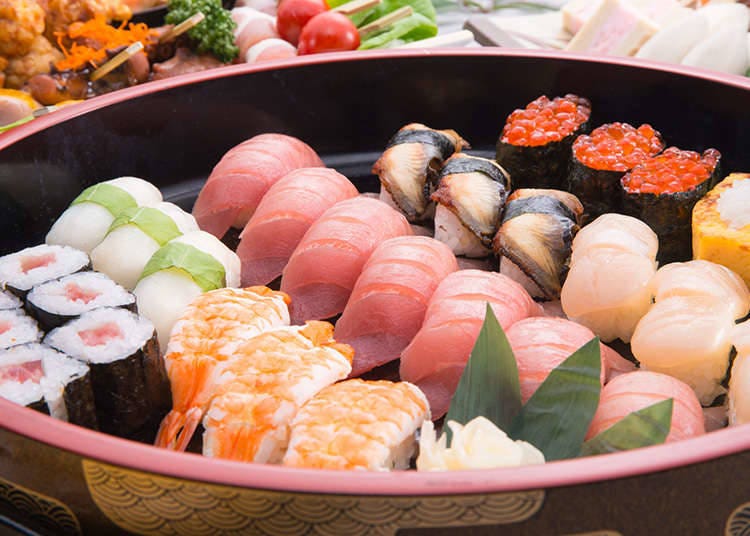
Sushi probably began with the custom of preserving food with fermented raw fish pickled with salt and rice, called “Narezushi”. It is said to have begun in Edo (old Tokyo) in the early 19th century. In the days before refrigeration technology, people would boil and pickle fish with soy sauce as a means of preservation. Although eating hand-rolled sushi was originally something for the common people and was sold cheaply at street stalls, it became more upscale over time, and today you can even find sushi served in rarified specialty restaurants for astronomical prices.
Hand-rolled sushi
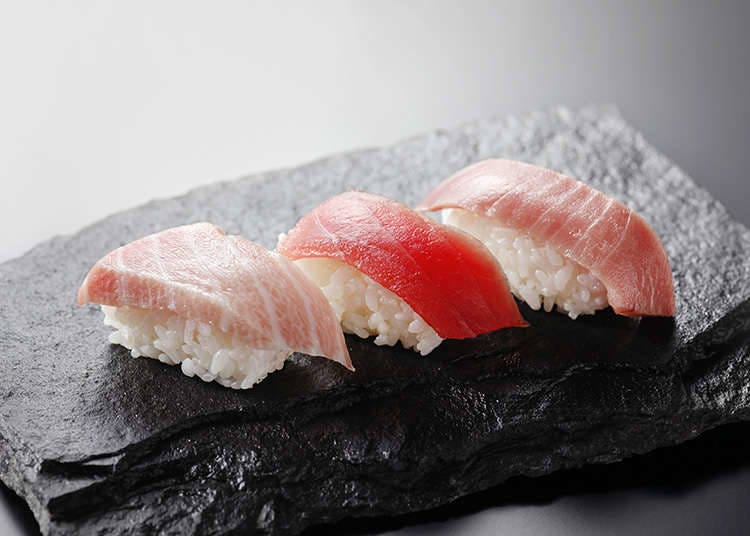
Red fish, such as tuna or bonito, are called akami, and the fatty belly of the tuna called “toro” is especially popular. White fish (shiromi), such as red snapper or yellowtail, has a more subtle taste. And fish with a shiny skin, such as sardines or mackerel, is called “hikari-mono” which literally translates as “shiny things.” There is even a way of cooking with vinegar that hides the strong “fishy” smell. In addition to the normal Neta, you might also find cooked conger eel or fried eggs, which shows that not all sushi is based on fish.
The varieties of sushi
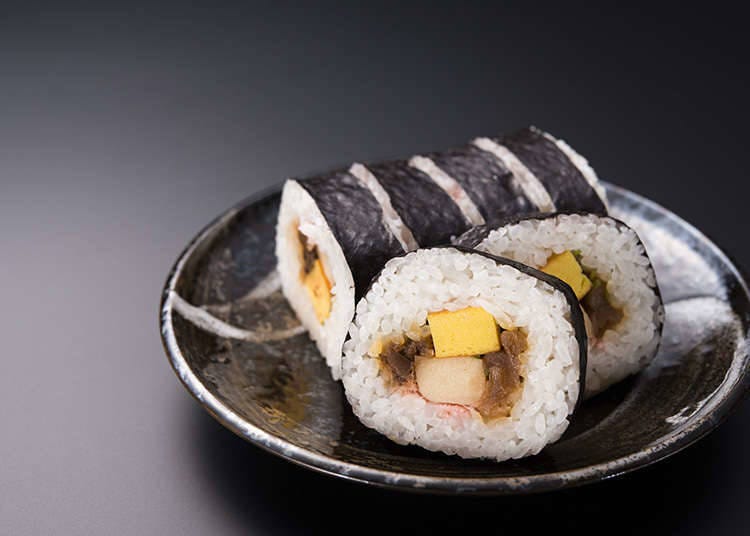
There are several types of sushi, for instance, Maki-zushi hand-rolled cones of rice and seafood wrapped in a piece of nori seaweed, and Chirashi-zushi which layers the sushi ingredients on top of a bowl of vinegared rice. Then there is Inari-zushi, rice wrapped in a thin layer of deep-fried tofu, which features a spicy-sweet taste. And there is Oshi-zushi, in which rice and sushi ingredients are forced into a box and hardened by the pressure. This type is often made in Osaka and Toyama Prefecture.
The Right Way to Eat Sushi
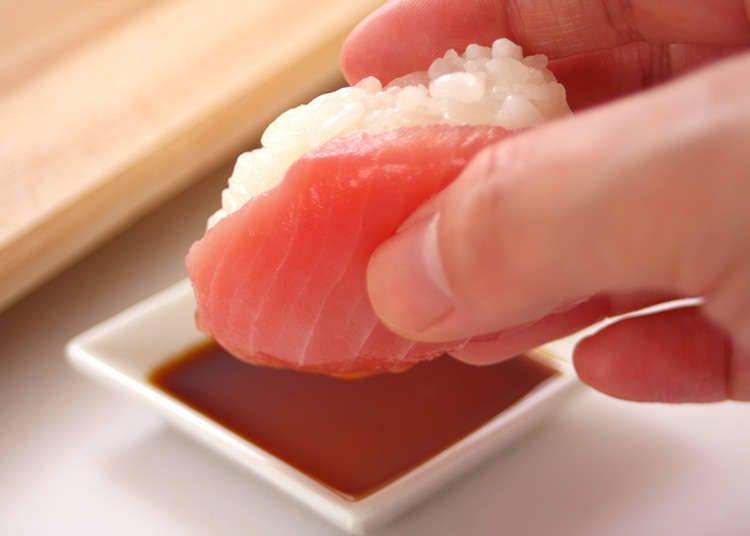
First, put a small amount of soy sauce into a small dish, then you can dip the sushi (NOT the rice) in it very lightly. Do not drown the sushi in soy sauce — just a small amount is enough. Many people ask if it is OK to eat sushi with your hands or if you must use chopsticks to be polite. The answer is that it is very acceptable to pick up sushi with your fingers, dip it bightly in soy sauce, and eat it.
Sushi restaurants also serve you thin slices of vinagered ginger called Gari, and a cup of green tea. People who really enjoy sushi often start with more bland-tasting Neta (such as shiromi) and move towards the more flavorful types of fish. Periodically, you can use a bit of Gari or green tea to freshen your mouth.
Places Where You Can Enjoy Sushi
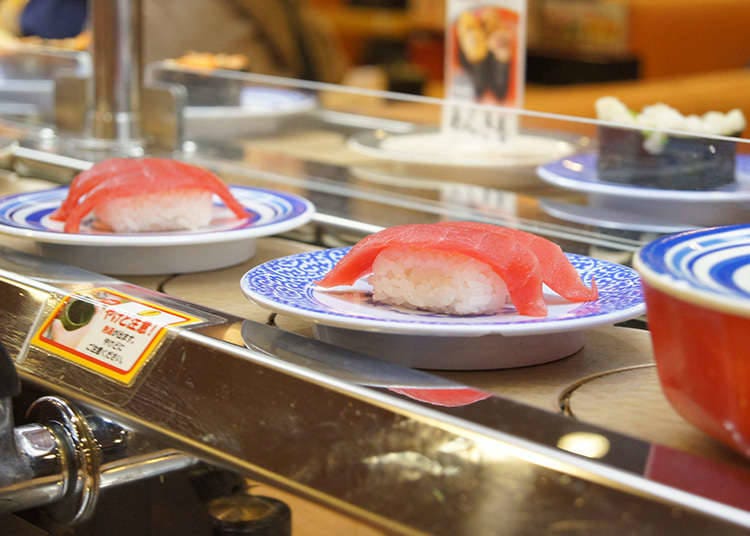
Today there are many places to enjoy sushi. For example, there is the standard sushi restaurant where you sit in front of sushi chefs at a counter, “a conveyor-belt sushi” restaurant where all sorts of sushi plates move around on a moving belt and you are free to choose whatever you want, and “delivery sushi,” where you order sushi at home and have it delivered directly to your door. Prices run from under 1,000 yen for packaged sushi at a convenience store to several thousand yen for a sushi restaurant, and even several tens of thousands of yen for a really high-end sushi restaurant in places such as Ginza.
- Category
*Prices and options mentioned are subject to change.
*Unless stated otherwise, all prices include tax.
Popular Tours & Activitiess
Recommended places for you
-

First Japan Cherry Blossom 2026 Forecast Announced! Here's When & Where to See Sakura in Japan
-
Ad

Preserving the Beauty of World Heritage Site Shirakawa-go for the Future Through Responsible Travel
-

Strawberries, Style, and Tokyo’s Coolest Neighborhood: Winter Afternoon Tea in Kichijoji
by: Guest Contributor
-
Ad

(Opening in Jan 2026) 'THE SUMO LIVE RESTAURANT HIRAKUZA GINZA TOKYO!' 5 Exciting Ways to Experience the World of Sumo!
-
Ad

Complete Guide to Ueno's National Museum of Nature and Science, the Perfect Place to Visit on Rainy Days or With Children
-

This Winter, Godzilla Takes Over Haneda Airport
by: Guest Contributor
-

6 Surprisingly Cheap Things in Japan
-

3 All-You-Can-Eat Tokyo Restaurants for the Hungry: Sushi, Meat and Sukiyaki!
-

Shibuya Sushi: 5 Best Tourist-Friendly Sushi Shops - From Casual to Classy!
-

How Japan's Sushi Trains Are Coping with COVID: Sushiro's Latest Safety Measures and Services
by: Miyu Shimada
-

Visiting Tsutenkaku Tower: Osaka's Retro Icon in the Heart of Shinsekai
by: Guest Contributor
-

Go-Around Sushi in Japan: Check Out the No. 1 Side-Dish That's Got Us Completely Hooked!
- #best sushi japan
- #what to do in odaiba
- #what to bring to japan
- #new years in tokyo
- #best ramen japan
- #what to buy in ameyoko
- #japanese nail trends
- #things to do japan
- #onsen tattoo friendly tokyo
- #daiso
- #best coffee japan
- #best japanese soft drinks
- #best yakiniku japan
- #japanese fashion culture
- #japanese convenience store snacks


















